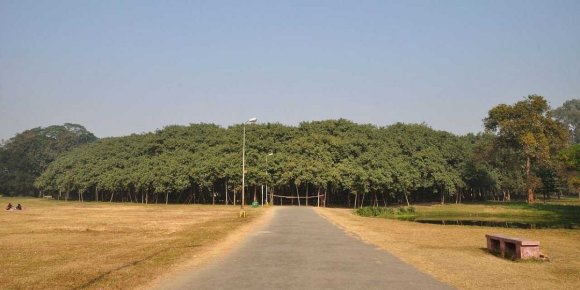
It may sound hard to believe, but the world’s widest tree, located near Kolkata, India, is bigger than the average Wal-Mart.
The gigantic Banyan tree may look like a forest from far away, but it’s actually comprised of a myriad of aerial roots that cover 3.5 square acres of land, which equals roughly 156,000 square feet, or 14,400 square meters.
Compare that to data from the most recent unit count and square footage report from Wal-Mart, which says that the average store size (that’s not a Supercenter) is just under 105,000 square feet or 9,750 square meters.
The Great Banyan Tree’s canopy is made up of 3,511 aerial prop roots that connect to the earth, which make them look like individual trees, according to the Times of India. The tree made it into “The Guinness Book of World Records” as the world’s widest tree, and has even been featured on stamps in India.
Visitors can see it at the Acharya Jagadish Chandra Bose Indian Botanic Garden in Shibpur, Kolkata, and walk around the .2-mile-long road built around the tree’s circumference (the Great Banyan Tree has continued to expand beyond the road, creating a sort of tunnel).
Scientists are surprised that the tree is still alive. In 1884 and again in 1886, cyclones hit the Great Banyan Tree, breaking it open and exposing its main trunk to a fungal attack. In 1925, the main trunk (at that time measuring over 50 feet wide) was decaying and had to be removed.
Yet even without its trunk, the tree survives — and flourishes — to this day. See more pictures of the natural wonder below.
The aerial roots are supported by other roots connecting to the ground, causing this singular banyan tree to look more like a forest.
And here’s a closer look at those roots.